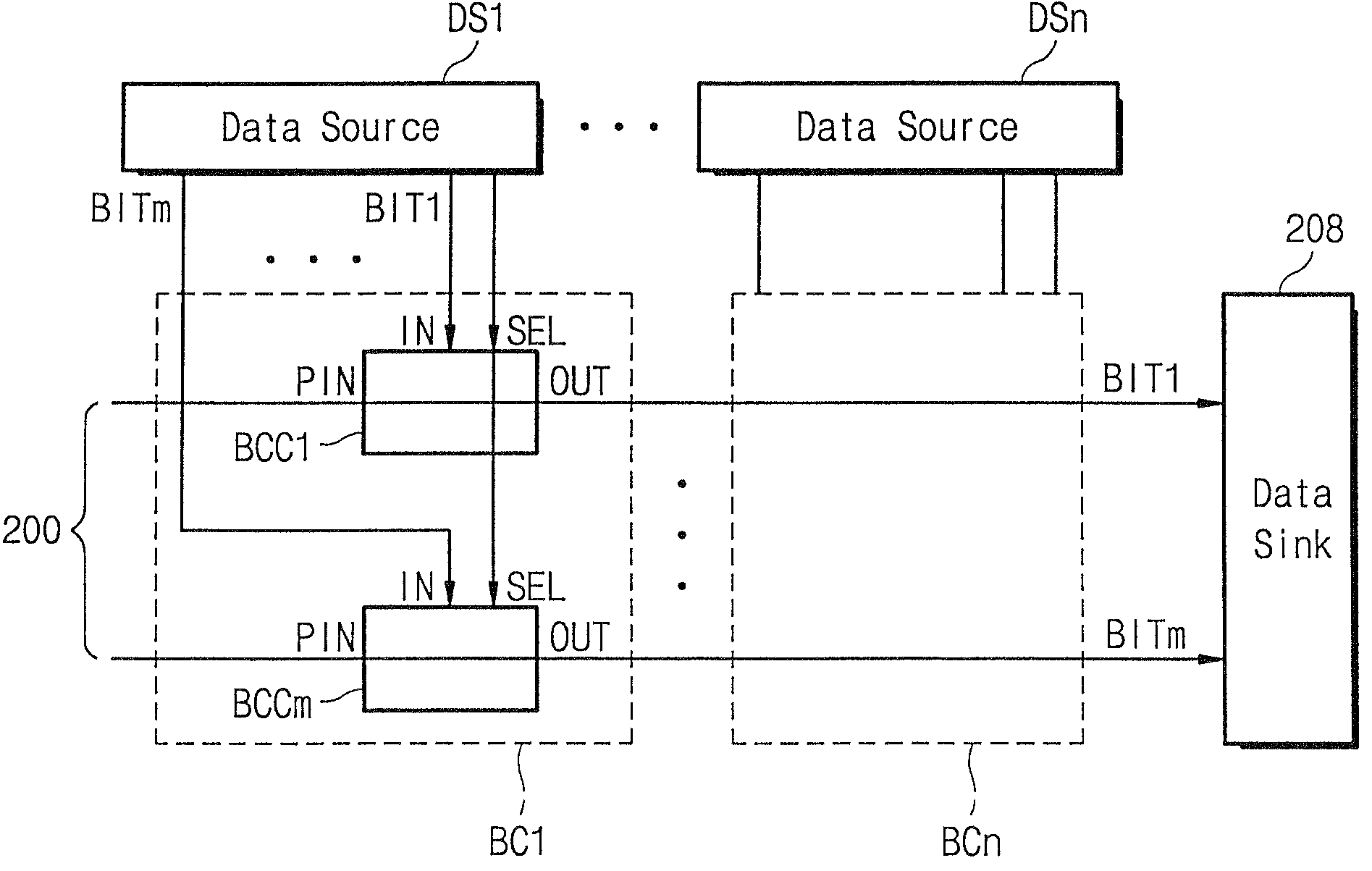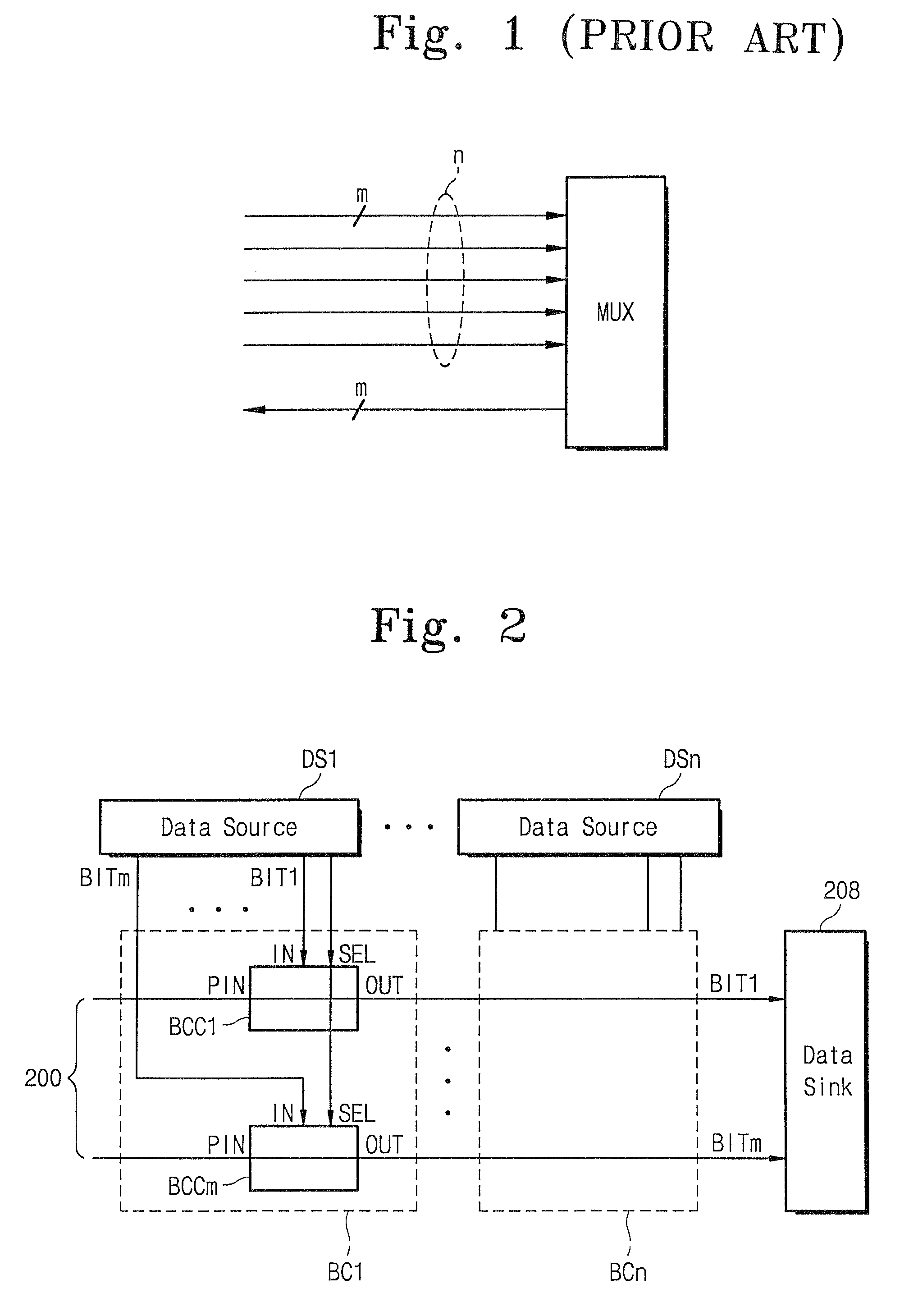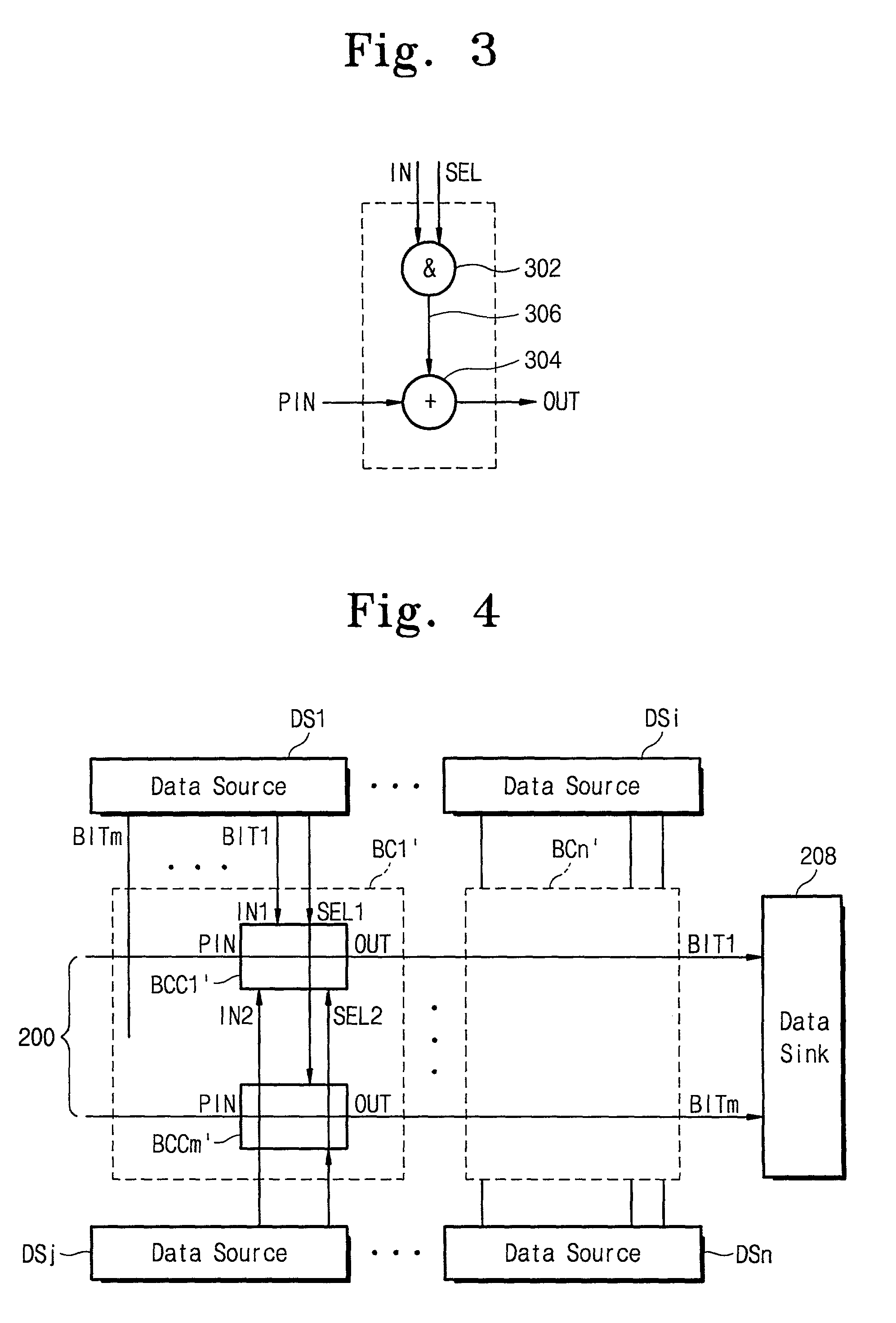Bus system
a bus system and bus technology, applied in the field of distributed bus systems, can solve the problems of insufficient embedded systems, tri-state buses or wired-or buses, which are used, and increase signal delays, so as to reduce the number of interconnections, shorten the delay time, and reduce the load
- Summary
- Abstract
- Description
- Claims
- Application Information
AI Technical Summary
Benefits of technology
Problems solved by technology
Method used
Image
Examples
first embodiment
[0026]FIG. 2 shows a construction of a distributed bus system according to the invention, in which N data sources (DS1˜DSn) each generating M data bits (BIT0˜BITm) are connected to a bus 200. Bus cells BC1˜BCn have the same number as that of data sources DS1˜DSn. In other words, bus cells BC1-BCn and each has the same M-numbered bit connection circuit BCC1˜BCCm (only BCC1 is indicated), where M corresponds to the number of the data bits. The reference numerals IN, SEL, PIN, and OUT denote an input of the data bit from the data source, a selection signal determining selection for the data source corresponding thereto, an output from a prestage bit connection circuit, and an output of the bit connection circuit, respectively. The data bits BIT1˜BITm are coupled to the bit connection circuits BCC1˜BCCm together with the outputs PINs from the pre-stage bit connection circuits. The selection signals SELs, being generated from a bus controller (not shown) in the digital system employing t...
second embodiment
[0041]As shown in FIG. 6, each block chain may be constructed in the form of that shown in FIG. 4, i.e., one bus cell BC being assigned to two data sources (DSs). An OR gate 606 is disposed between the block chains, 602 and 604, and the data sink 208 to transfer a valid data bit to the data sink 208. The data bit output from the OR gate 606 is one provided from a selected data source and transferred through the bus cells including one that is interconnected to the selected data source, in one of the block chains 602 or 604. The OR gate 606 can be arranged for each data bit. The maximum value of delay time in the bus system shown in FIG. 6 is a sum of a delay time through the block chain and a delay time at the OR gate 606, approximately being one half of that of the second embodiment shown in FIG. 4.
[0042]As stated above, the invention offers useful techniques to reduce the number of interconnections from M*N to M, smaller than that with centralized single MUX-based buses and the sa...
PUM
 Login to View More
Login to View More Abstract
Description
Claims
Application Information
 Login to View More
Login to View More - R&D
- Intellectual Property
- Life Sciences
- Materials
- Tech Scout
- Unparalleled Data Quality
- Higher Quality Content
- 60% Fewer Hallucinations
Browse by: Latest US Patents, China's latest patents, Technical Efficacy Thesaurus, Application Domain, Technology Topic, Popular Technical Reports.
© 2025 PatSnap. All rights reserved.Legal|Privacy policy|Modern Slavery Act Transparency Statement|Sitemap|About US| Contact US: help@patsnap.com



